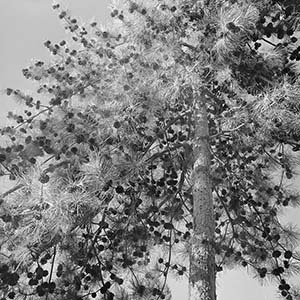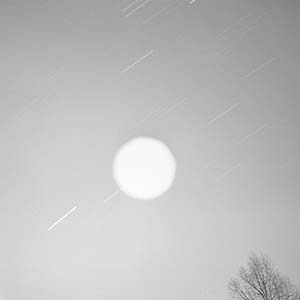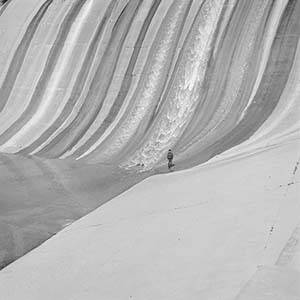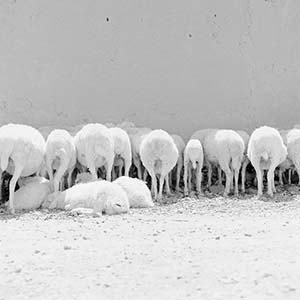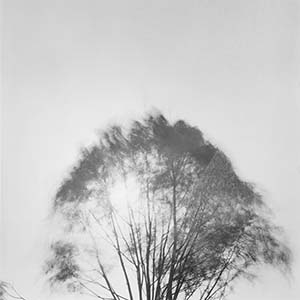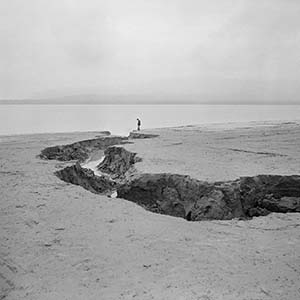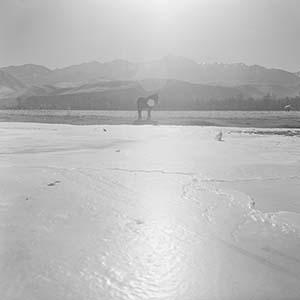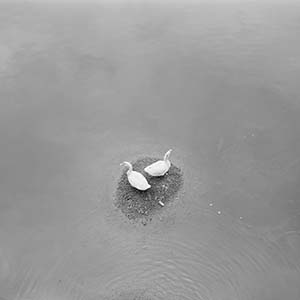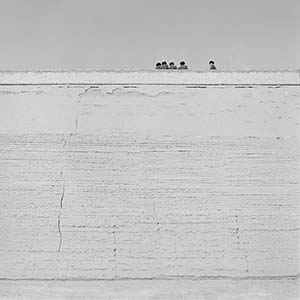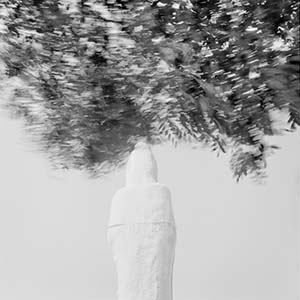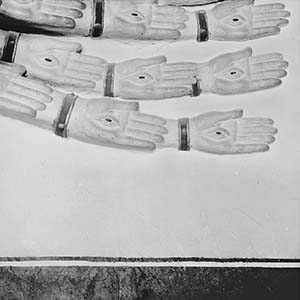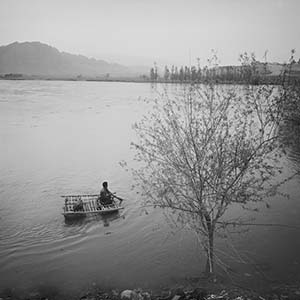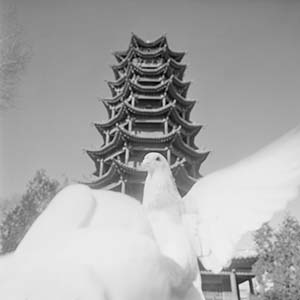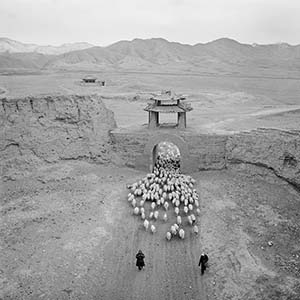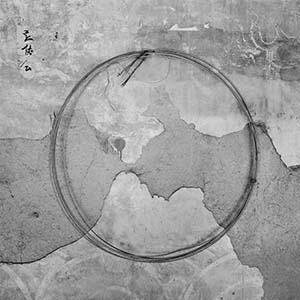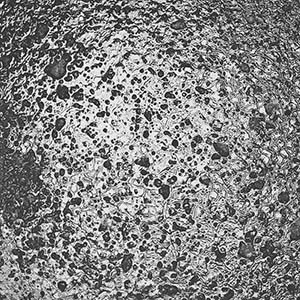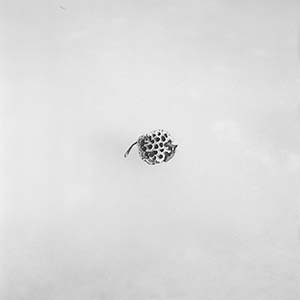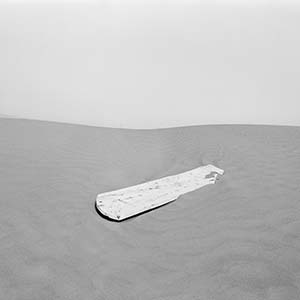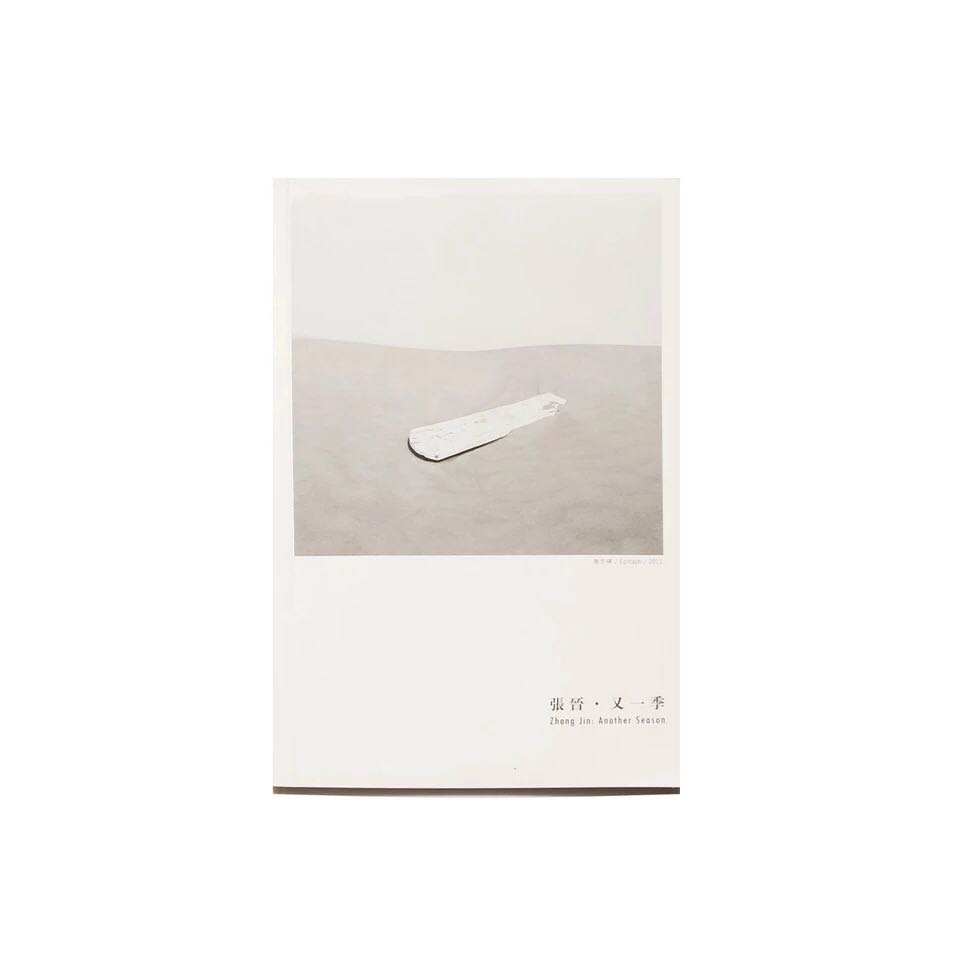Dark and Nostalgic Words for a Golden Age:
Zhang Jin’s “Another Season”
“The movement of the Dao by contraries proceeds.” - Dao De Jing
Born in a mountainous area of northeastern Sichuan, photographer Zhang Jin’s educational path was neither dangerous nor difficult, as he rose quickly to get his master’s degree in chemistry. In 2004, he left for New York, and received his Ph.D. three years later. He had climbed to the top of the academic ladder, yet still felt empty. He returned to China in 2008 and moved to the fertile Chengdu plains, abandoning his previous path and throwing himself into art. The next year, he began “Another Season,” and over the course of the next four years, he traveled to towns all over Shan’xi, Ningxia, Gansu, and Qinghai using primitive modes of transportation.
In looking at “Another Season,” the nearly one hundred images convey both simplicity and quiet. The tone of the series generally appears peaceful and light, but the photographs have darker implications. Zhang’s abstract goal is not easily grasped with a brief glance, but there is no way to back out, you must simply carry on. Rather than utilizing an observational method that pits the objective against the subjective, he places the entire spirit he wants to convey within an object, exploring his conscious and unconscious attitudes toward the things and cultures in his photographs. As a result, his images are a starting point for interpretation and dialogue.
When we try to discern the theme of the series, “Another Season” appears intuitive, but your feelings pass almost as soon as you have them, so much so that the series could be called “a record of inflamed emotions.” However, looking at the overall tone of the work, except for a few images that require a reference, Zhang Jin neither creates texts because of emotion nor poetry without emotion in the majority of situations. Bizarrely, his lack of intent gives the images an immediacy that is “visible but cannot be placed before our eyes” and a directness that does not carry understanding or intent. A photographer without intent may actually have hidden intentions; there must be an ulterior motive, which leads people to focus on the precise coordinates of his mood.
Based on the names of certain photographs, we can roughly determine Zhang’s purpose. In essence, his objective depictions also leave room for doubt, but his methods feel intentionally fixed in time, space, and reality, like a specimen; the different degrees of doubt provide an original vitality and energy. Although sometimes the photographs move towards the subjective, but in the main, they don’t end in words. Therefore, the originals, which were named after seasons or solar periods, carry a sense of nostalgia. Next, the images branch off, separating from the earth and creating an abstract link that runs parallel to the real world.
Zhang Jin’s creative moods are permeated with dust, but they flow unobstructed. His nostalgic gaze cannot escape this world, but he is not limited to external aestheticism or self-obsession. Images produce life, and nature is marvelous. When the focal length of the eyes exceeds the material distance with reality, the true focal point of his mind, and perhaps his spirit, is referenced in the abstraction of infinitely distant symbols on the lens. “What is called the Way is elusive and intangible.” Obvious photographic subjects become like mysterious words from the Dao De Jing, intangible yet right before your eyes. In summary, the objects presented on the photo paper are the result of Zhang Jin observing heavenly heuristics over the course of his creative journey. We might consider the world from the viewpoints of followers of Daoism and Confucianism; as desiring beings, perhaps the world is a heavenly creation, as indicated by the line “Does heaven speak?” from The Analects, or perhaps nature is as Zhuang Zi said, “The seasons are ordered but whispered.”
In a utilitarian sense, the uncertain nostalgic images of “Another Season” may be difficult to understand, due to the unevenness of the photographic language. However, Zhang Jin’s iron gaze sorrowfully and magnanimously soothes and reflects the tumult of the changing times. Unique qualities are neatly narrated and elaborated on similar semantic planes; the works imply the transcendence of worldly concerns and traditional aesthetics, maybe even inspiring a few viewers. In contrast to the tradition of directness in documentary photographs and the human assumptions of moral concern, Zhang Jin’s transcendental standpoint and ideas cast off the dual predicaments of tradition and morality. This intrinsic transcendental path (his opportunity to have a voice in mainstream contemporary photography) veers off into cognitive channels and creative spaces that are relatively unaffected by logic and the silent pursuit of knowledge.
Simply looking at the content of the images, the photographer seems to have renounced the world. However, if we place “Another Season” against the background of China’s economic development, the real meaning of these nostalgic images suddenly seems clear. The earth does not differentiate between the four directions, and time does not differentiate between male and female, old and young. All Chinese people pass through “Beijing time” together, but the economic time difference seems to be denominated in centuries. Zhang Jin sees a traditional society stopped in the economic past; the villages and people of the northwest have long been ignored in the Reform and Opening process. They must face the irresistible gusts of modernizing wind from the East; can they peacefully manage the challenges of transformation? Or is it that there are no opportunities to converse with “modernity” or that everything must bend to and bear with adversity?
Modern propaganda posters with white letters on red backgrounds are hung over the deafening din of construction equipment, but “Another Season” noiselessly pronounces the fate of traditional cultural values on a modern stage surrounded by so much noise. An ancient, simple lifestyle focuses on the concept of the unity of man and nature and related wisdom. How will later generations maintain a sense of calm amidst a noisy environment and look back to see things afresh? Could listening to those faint flutes have a modern meaning? Zhan Jin appears to travel outside himself, filling the photos with dark words. When he walks along a path, he is like a traveler walking backwards through time. He made a complete about face to turn towards the motherland and away from China, entering the world by withdrawing from it. This retroactive entry seems to remind us, “People are not simply economic animals.”
During the Han Dynasty, Zhang Qian was sent to the Western frontier twice, and he opened an official conduit for East-West trade and cultural exchange. Regardless of how the territorial changes in later Chinese dynasties influenced border positions, Zhang Jin has been traveling along the east end of the Silk Road and his work praises or meditates on the past. For a photographer who does not understand the historical and cultural values of his images, this might seem to be a reverse disenchantment. The viewer opens the door to his heart slightly, and gently coaxes open the door to his brain, such that a ray of light shining from the crack in a door frame highlights the dust in Zhang’s visual spaces. He casts off the traditions of exile, and opens once again the channels for interaction between past and present, foreign and Chinese; he can comfortably travel the modern Silk Road.
While on the Silk Road, Zhang Jin considered his ideas and his return home, and to a certain extent, his work reflects a personal cultural nostalgia and concern for the present world. Thus, the cultural development of New China is like a tree growing in reverse, in that the highest will is both heaven’s will and popular will. Traditional culture has nowhere to take root, so it continues to drift in the obscure mists of history. When you look up, you always see the sun and not the ancient moon. If the heavens do not differentiate between day and night, how can culture persist? I don’t know whether we’re fortunate or not, but in the vast desert, you and I look at the indistinct silhouette of a person on a long journey, recalling the spirits of the dead and shimmering brilliantly as he walks along the horizon in the pitch blackness.
by Cao Liangbin
New York Sep.2, 2013
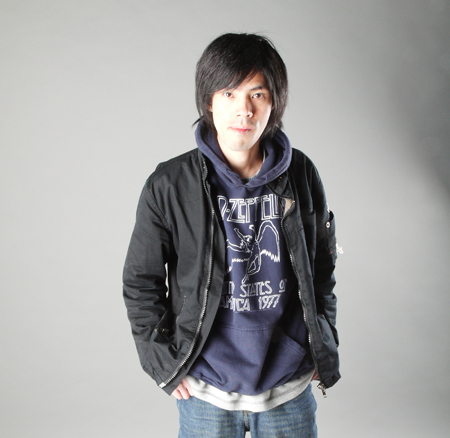
Zhang Jin
Born in Sichuan, China, 1978
University of Science and Technology of China, B. S., 2001
University of Science and Technology of China, M. S., 2004
Polytechnic Institute of New York University, Ph. D., 2007
Live and work in Chengdu
SOLO EXHIBITION:
2013 “Another Season Zhang Jin Photography Exhibition", ThreeShadows +3 Gallery, Beijing, China
GROUP EXHIBITIONS:
2014 "Can I Ask You a Personal Question", Sichuan Univ. Gallery, Chengdu, China
2014 "How to be Part of the World", Landing Art Festival, Chengdu, China
2014 "From New Photography to Rookie Awards", Hexiangning Art Museum, shenzhen, China
2014 "7-days Workshop", A4 Contemporary Art Center, Chengdu, China
2013 "Beijing Photo Biennial", Beijing, China
2013 "Multi-dimensional Biannual Contemporary Photography", Chengdu, China
2013 "Remote Places, Close Spaces", Street Level Photoworks, Glasgow, UK
2012 "Sui generis - TOKYO PHOTO 2012", MEM Gallery, Tokyo, Japan
2012 "NextKunst.licht - Another Season", Kunst.lichet Photo Gallery, Shanghai, China
2012 "Another Season", Three Shadows Photography Art Center, Beijing, China
2011 "Whispers - Dali International Photography Exhibition", Dali, China
2009 "Parallel Translation", Chengdu, China
2007 "Intimate Distance", Qart Gallery, NYC, USA
AWARD:
2012 Three Shadows Photography Award
PUBLIC COLLECTIONS:
White Rabbit Gallery
Three Shadows Photography Art Center
SELECTED BIO:
Book: Contemporary Photography in Asia, by Keiko Hooton & Tony Godfrey, p. 130-133, Prestel, April 25, 2013 (German)
Book: The First "CAFAM.Future" Exhibition Sub-Phenomena: report on the state of Chinese Young Art Nomination, edited by Xu Bing, p. 590-591,
Aug 1, 2012 (China) Imamagazine, “Photo Planet” by Sawako FUKAI, p. 11, Spring Vol.3 2013 (Japan)
